Tips from 'Frankie Keeps Talking' to Make a Low-Budget Short Look Pro
Annabelle Attanasio’s NoBudge short had one shoot night to get it right.

Ever been on a bad date where you couldn’t get a word in edgewise? Or perhaps you yourself—cursed by the gift of gab—have perpetrated this dating foul. Either way, Annabelle Attanasio’s award-winning short Frankie Keeps Talking will probably resonate. Premiering last week on NoBudge after wowing audiences at 19 (!) film festivals, Frankie tells the story of a woman’s desperate attempts to stop her date from ‘manologuing.’ It’s a hilarious social satire of gender roles in the dating scene; it’s also a bravura visual ride with almost no cuts.
You may recognize Attanasio from her turns onscreen—she’s had recurring roles in CBS’s Bull and Cinemax’s The Knick—but she’s also a talented writer/director. Besides Frankie Keeps Talking, Attanasio’s feature script Mickey and The Bear recently went through the Hamptons International Film Festival’s screenwriting lab; she plans to shoot it this fall. She’s also working on another short—this one even more surreal, and even more feminist, about an all-male safe space. How does she stay so busy? Attanasio prides herself in her careful, economical use of resources at hand, and No Film School sat down with the writer/director/star to discuss her approach.
Mine your experience
First and foremost, Attanasio’s most important resource is her own experience; in this case, ideas inspired by her own botched dates. More specifically, Frankie’s titular character was loosely derived from a real-life gabber with an affinity for the word ‘Frankly.’ Attanasio offered a bemused explanation. “This film was born of a daydream where I wondered: ‘what could I have actually done to claim my presence in that room and speak my mind?’”
If you’re reading this, chances are you want your voice heard too. Perhaps you’ve got a short film you want to make, or at least visions that you’d like to realize. Do you need to make a film about your last date? No. In fact, please don’t—unless your idea is as good as Attanasio’s. That said, she encourages you to mine your own daydreams. “Filmmaking is the path to articulating your visions,” she explained. “The conundrums that swallow up your brainspace on a daily basis, the existential questions you’re up late at night thinking about—embrace them. They’ll lead you to the story you want to tell.”
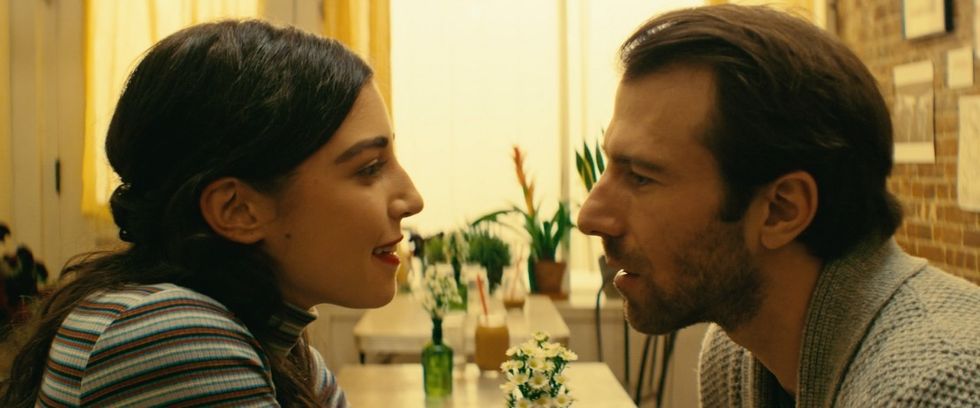
Cast within your means
As it turns out, Frankie Keeps Talking didn’t have an auditioning process—Attanasio simply cast herself and her friends. The results speak for themselves: Alex Hurt is the perfect Frankie, channeling the silver-tongued, larger-than-life bro whom you’d find in a French-style New York Café. Even as the villain, he’s bizarrely charming. Alex Kramer plays the perfect doe-eyed barista, forced into the conflict of the rapidly unraveling date. And she, of course, plays the nameless victim with pitch-perfect physical comedy.
“I’m strongly averse to auditioning when it isn’t necessary,” Attanasio insisted. “Because I’m in the acting world, and meeting actors so frequently, my process is cataloguing those actors in my brain. And when the time is right, I cast my friends from that pool.”
"I write lists of people that I think are interesting, then cast out of that list when I have a project."
After casting, Attanasio usually makes time for substantial workshopping and rewriting: “Get the actors in a room, run it, see what their version of the script would be.” In the case of Frankie, however, she was so sure of her intentions she wrote Frankie’s monologue all in one go, and immediately knew whom to cast. “I have this guy in me,” she shrugged, “The pseudo-intellectual coffee snob who obsesses over every gym repetition. Who loves talking about himself.” Suddenly, her eyes went wide, as if to say ‘am I talking too much?’ Then she laughed.
Even if you don’t have the luxury of meeting other actors, you can make this approach work for your own low-budget film. As Attanasio describes it, “I write lists of people that I think are interesting, regardless of acting stature or training, then cast out of that list when I have a project. If I like someone as a person, if I like someone’s talent, I can trust them to make a role their own.” Auditioning has its perks too, she was careful to add, but can sometimes mean you’re unsure of your ideas. “I realized that I only audition when I don’t know exactly what I want for a role,” she admitted. “Sometimes it’s helpful to see the spectrum of people coming in: different looks, voices, backgrounds. At some point it clicks, and you can reverse engineer the role around it.”
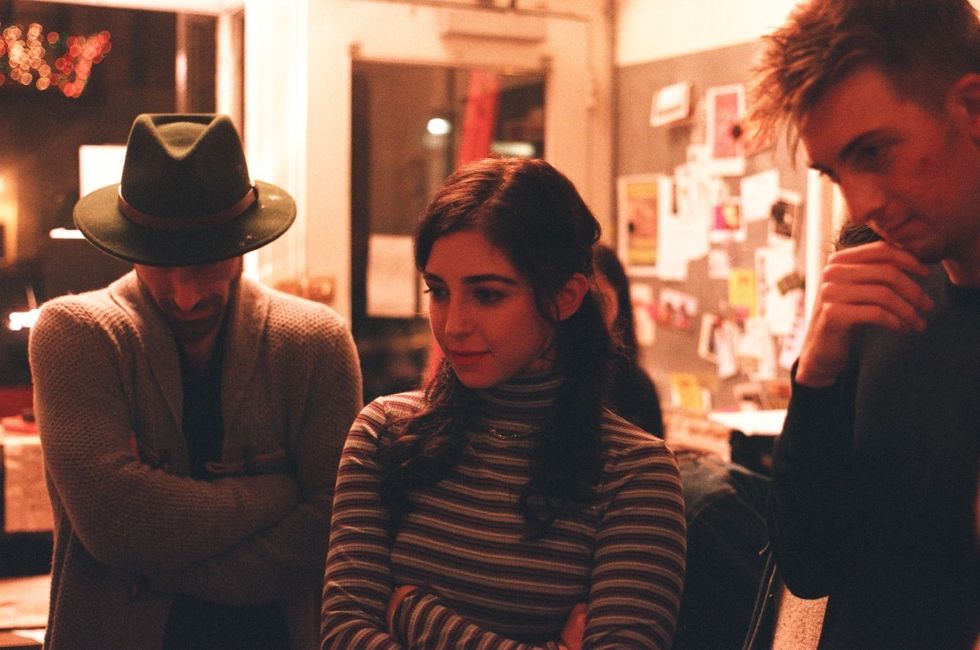
Use what you've got
Attanasio recruited the rest of her crew and acquired the necessary equipment via the same method: relying on favors from friends and trusted collaborators. But with that came a catch. They could shoot in an East Village café for a discounted price—but only overnight. Unless you’re a lighting pro yourself, you probably won’t even notice that Frankie Keeps Talking was actually filmed night-for-day.
Attanasio credits her DP, Leo Purman, for making the look so convincing. Purman created a universal soft light by bouncing lights, while making sure they were directional enough to achieve the look of morning sunbeams. For the technically savvy, here’s a more specific translation: the crew used multiple tungsten open-faced lights outside the café’s windows, bouncing into 4x8 bead boards that played into bleached muslin covering the windows. Inside, they used Lekos which bounced into a bead board over the picture table. Between the bounce board and the table they used a half-soft frost rag to help spread out and soften the light further. The result was natural morning light in the dead of New York night.
The crew used multiple tungsten open-faced lights outside the café’s windows, bouncing into 4x8 bead boards that played into bleached muslin covering the windows.
Obviously, this strategy took extra time and effort, but in Attanasio’s mind—with the right collaborators—low-budget can be a good thing. Beyond the fact that you’re spending less money. “My filmmaking philosophy is that real creativity comes out of financial limitation,” she declared. “In our case, we only had one night to shoot, because the place cost so much to rent out. So we had to ask ourselves, ‘How do we tell our story beats from start to finish in the most economical way possible?’ In the process of making the film work logistically, we killed a couple darlings.”
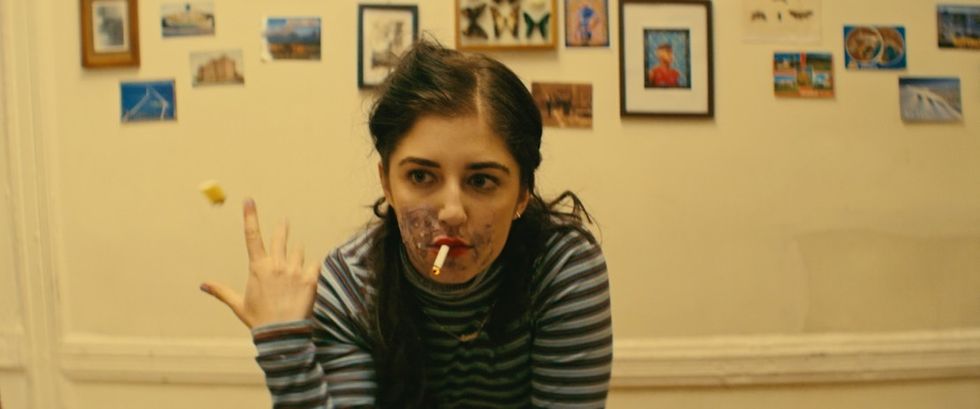
Let style follow substance
As evidenced by Frankie Keeps Talking, Attanasio is repeatedly drawn to similar themes: the feminist perspective—and by comparison, masculinity. These themes also led her to her film’s stylistic approach. The film is stylish, to be sure—but the sleek camerawork isn’t just for show. Her carefully choreographed scene employs changing perspectives to deliver a powerful feminist message.
Here’s how she did it. As soon as her character discovers that she’s invisible to her date, the action unfolds in a real-time barrage of impulsive behavior—or as Attanasio describes it, “an avalanche.” Talking to a motormouth demands momentum, so the young director and crew went with a Steadicam. As she describes it, her Steadicam-tango was part-creative conceit, part necessity.
On one hand, she wanted the camerawork to subvert expectations, allowing for her social satire to be seen from the female perspective—even by male viewers. For the first two minutes of screentime, the camera orbits Frankie, and her character is very much secondary. Only when she returns from getting napkins does the film become her experience. “The conceit is to trick the audience into thinking it’s Frankie’s story, as they’re accustomed to expect: the star is the man.”
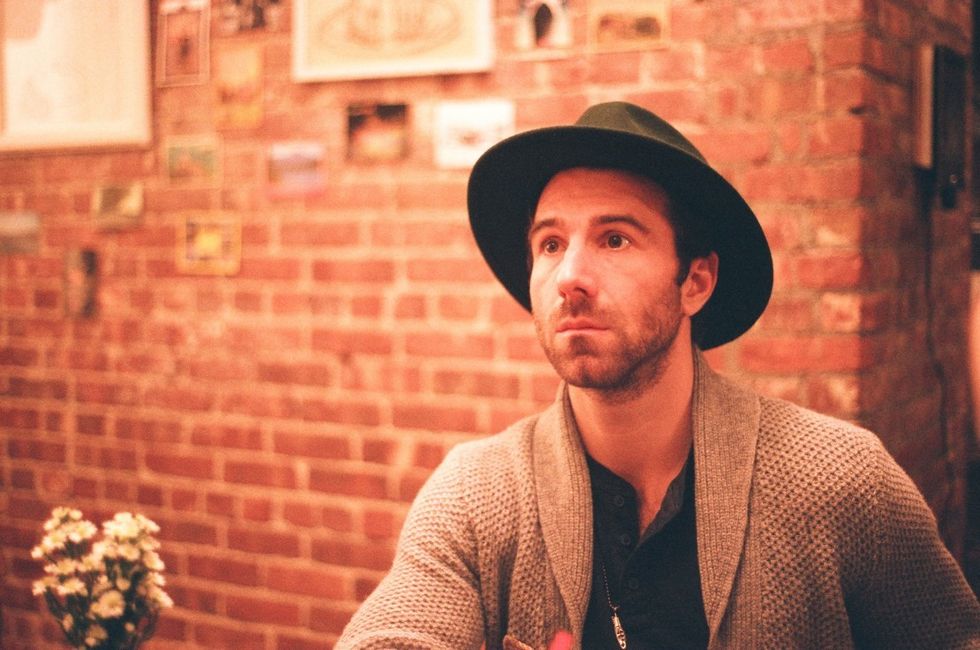
Rehearse, a lot
Frankie Keeps Talking actually has a few cuts, but when you’re watching the film, it feels totally fluid, creating the illusion of one continuous camera move. Using the Steadicam also helped compress production time—a boon for their low budget and limited shoot time. In lesser hands, a Steadicam might have cost more, both by complicating production and as a hard cost; but in this case, Attanasio’s blocking was very precise and well-rehearsed…and the camera was loaned at a favorable rate.
The real hard work was prepping for the shoot date: one single night in the East Village. Because the Chaplin-esque physical comedy in Frankie Keeps Talking is so meticulously-timed, Attanasio gave herself three months of rehearsals. “Once a week, we’d all get together in a dance studio to rehearse blocking,” she recalled. “Studio space isn’t free, but I happened to have a friend with access. You gotta use whatever resources you have. If you can find a way to rehearse off-location for cheap, you’ll be much better prepared, logistically and financially.”
“I learned that everyone is going to have their own version of your story: ‘It should open this way, I think this scene should be here.’”
The production’s budget allowed for only one on-location rehearsal, the night before the shoot—which resulted in a broken table. Luckily, all of this prep was done with the expectation of potential disasters, so she had enough time to replace the table before the shoot, this time with five legs for good measure.
As a result, production itself was hiccup-free. “We were pretty well-prepped,” Attanasio recalled. “Each shot took about 3-5 takes. The most taxing moment was when Alex, who plays the barista, almost threw up from having to kiss me,” she laughed. “My face was smeared with buttercream and unfiltered cigarettes. It was gross.” Take note: any short film will create its share of nausea; Attanasio counts this near-vomit scenario as a victory.
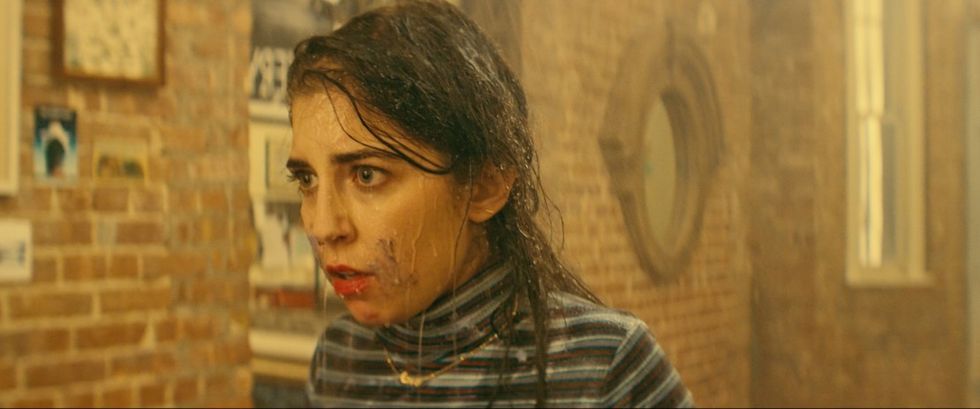
Stick to your vision
Lessons learned during Frankie Keeps Talking were reinforced by her experience at the Hamptons International Film Festival’s screenwriting lab, where she was working on the script for her first feature: Mickey and The Bear.
Receiving feedback and mentorship at the lab was one of her key takeaways. “I learned that everyone is going to have their own version of your story: ‘It should open this way, I think this scene should be here.’” Attanasio shook her head and smiled. “It was overwhelming at first, but I finally realized that you cannot take everyone’s advice. Feedback, criticism—they’re good things. You need to listen to all of that, but then you have to center it around the movie that you want to make. Use those voices to further entrench yourself in your vision of your story.”
Once she was done with the lab, she went through four months of rewriting her screenplay, only to go back to her original draft. Then finally, by taking nuggets of advice from her mentors and adapting them to her vision, she got to a version that she plans to shoot. “You have to be able to hear all feedback and field it without sacrificing your vision. That’s the hard thing that I don’t think anyone ever fully learns.”
Attanasio’s final words of advice? Trust your instincts, and swing for the fences. “Push yourself. Don’t be afraid to go too far, be too strange or fucked up. If I had a second chance to make Frankie Keeps Talking I would have gone even further, even more unhinged. Regardless of whether you’re making an off-center cultural satire or gritty realism or everything in between, don’t apologize for your story, fully own it. For everyone who doesn’t like it there will be someone who truly relates.”
She nodded. “And find good collaborators. Self-doubt is just a voice in your head, and the best antidote is a very collaborative work environment. Empower your collaborators to have a stake in the project, even get the PAs to voice in. Part of why acting is challenging is because it’s really just you. But once you’re part of the democratic process of filmmaking, there’s no room for self-doubt.”











